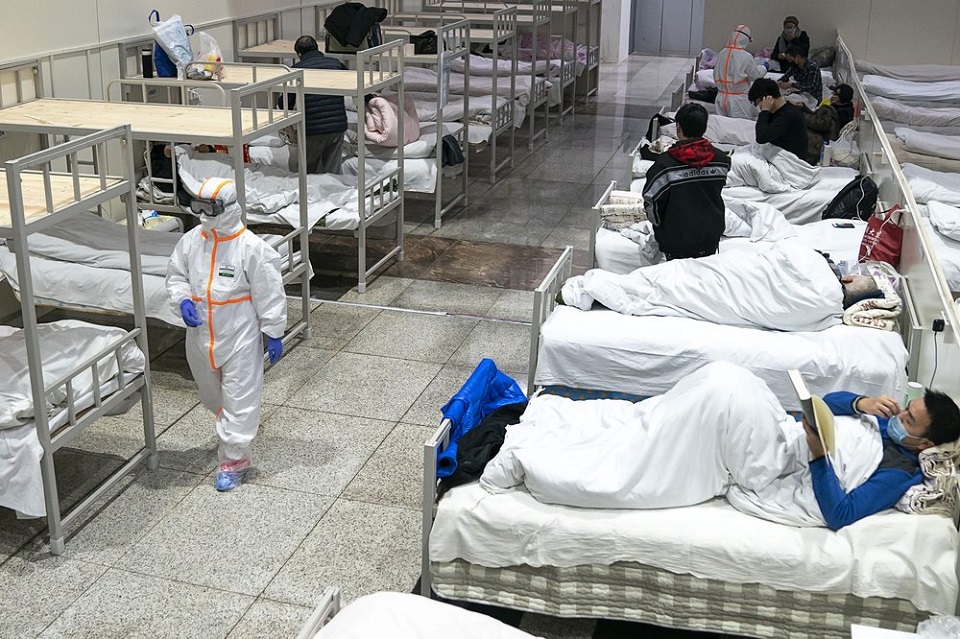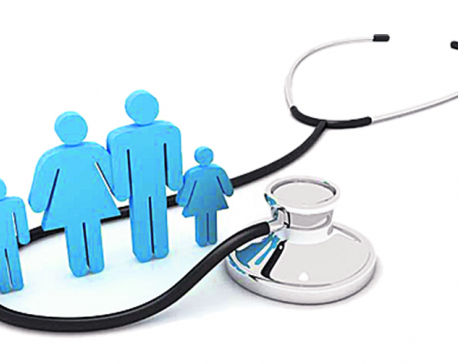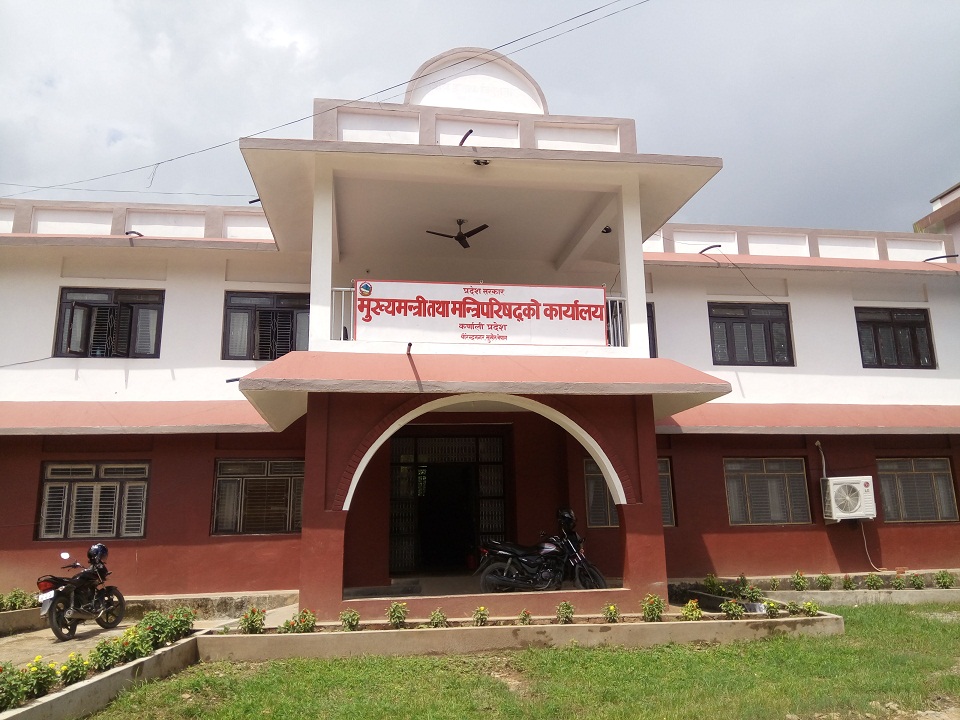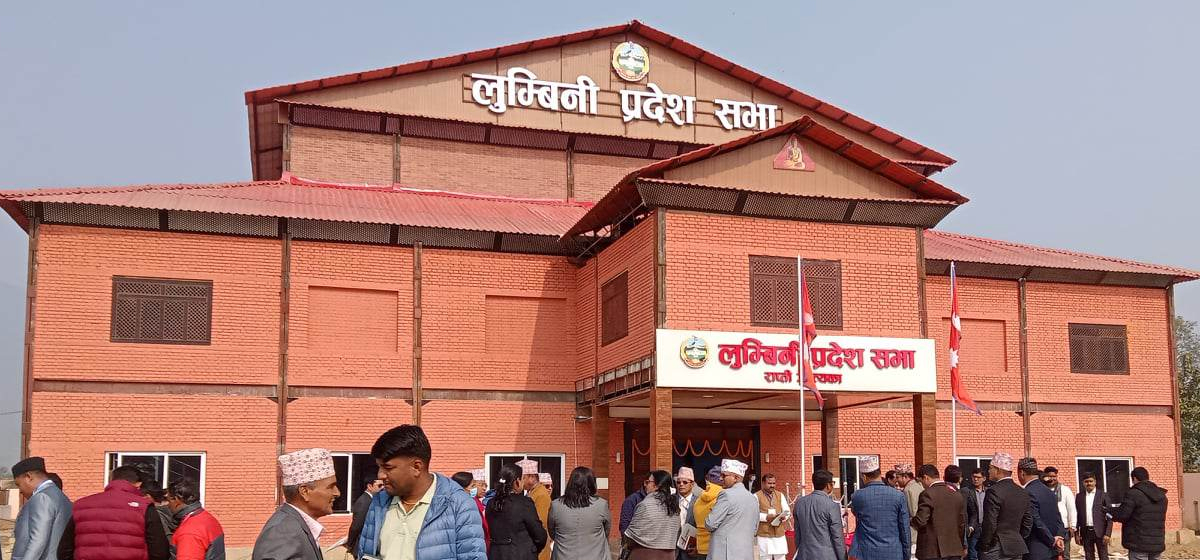
OR
How occupational hazards afflict health professionals
Published On: February 8, 2021 07:00 AM NPT By: Narayan Man Shrestha

Doctors, nurses and health staff have to face occupational hazards, including infectious diseases, contaminated puncture wounds, radiation, solvent and chemical exposures, and psychological stress among others.
Humans are the only beings on earth, who need to earn money for their livelihood. This could perhaps be due to the reason that we label and consider ourselves as the most superior and civilized beings on earth. In order to earn, humans take up different professions. Every profession requires a great deal of studies and trainings before one can become professionally sound. All professions have their own significance and are equally important in their area of work. However, it is undeniably true that medical profession needs lots of sacrifices before any person becomes an expert medic. Acquiring a preliminary medical degree such as MBBS requires a great deal of personal effort, time and money. Besides, this degree is not adequate and one has to complete further studies such as MD, DM or others to be a specialist.
Every occupation holds certain hazards in the life of the workers. In the past, this was much true in the industrial sectors, whereas presently these occupational hazards are prevalent in almost all kinds of professions. The factory workers in industries are constantly exposed to different hazardous components such as silica, fibers, smoke, noise, chemicals etc. This was true in case of manual workers, but now this is common even in high level jobs especially among medical workers.
Hospitals and other health institutions are not necessarily healthy environments for workers. They have unique occupational hazards, including infectious diseases, contaminated puncture wounds, carcinogenic and mutagenic exposures, radiation, solvent and chemical exposures, occupational dermatitis, physical injuries, poor air quality and psychological disturbances.
Hospitals are multipurpose service centers and in some large health institutions, the support services can be compared with those of a small town with administration, food services, housekeeping, power generation, garbage disposal and incineration, mechanical services, maintenance and transportation services. Despite all the existing facilities, the medical workers such as doctors, nurses and auxiliary staff cannot be exempted from occupational health hazards.
Perhaps the most worrying hazard to health professional is hospital-acquired infections particularly AIDS, hepatitis B, Tuberculosis and the COVID-19 which has become a pandemic. Although, these diseases may not be the most frequent health hazards to which health workers are constantly exposed, these diseases have been proved to be highly infectious.
Hazards of infection
Hepatitis and AIDS- Hepatitis B and its variants are prevalent in hospital environment. The risk of Hepatitis B following a puncture wound contaminated with body fluids from a known positive carrier is six to 36 times greater than the risk of HIV infection from an accidental puncture wound from an HIV positive patient. As regards Hepatitis B, fortunately there is an effective immunization which must be administered to the health workers such as doctors, nurses and laboratory technicians and other high risk staff. There is no vaccine yet available to block the human immune deficiency viruses.
Tuberculosis is still endemic in our country with an increased prevalence among immune-compromised individuals. Each medical professional should be recorded for TB screening skin test or BCG vaccine. Then comes influenza. It is crucial that all health workers receive a ‘flu shot' every year in order to protect themselves as well as to stop the spread of the influenza in the hospital and the community.
In children's hospital we frequently come across the common infectious childhood diseases such as rubella, measles and chicken pox, which could be fatal to patients who are immune-compromised or suffering from debilitating chronic illness. In most health institutions, we can find a high proportion of female employees of child-bearing age whose potential offspring could be at risk if these employees are not immune to rubella.
Covid-19 outbreak which began in November 2019 has now become a global pandemic. This virus has caused a colossal damage to the human lives and the economy worldwide. Our country has also witnessed community transmission of this virus in recent days and the capital city, Kathmandu, has become the worst hit region.
At present, majority of the medical experts in our country are of the view that government needs to carry out treatment of Covid and non-Covid patients in separate hospitals. At this time of the pandemic, the health workers are under huge pressure and are in a state of panic. Hence, all health workers must be motivated and their morale must be boosted through different possible means. They have to be provided with effective face masks, face shields, gowns, and personal protective equipment and their use must be made mandatory during working hours in all hospitals. Each hospital must be provided with Rapid Rescue Team (RRT), which will monitor and carry out contact tracing. The infected health workers must be kept in quarantine or isolation in an effective manner and their required test carried out in time. Therefore, each hospital must develop Infectious Disease Control Committee to look after the welfare of its employees and service seekers.
Non-infectious hazards
Health workers also suffer various other conditions. Low back pain isprobably be the most common occupational health hazard of nurses. Very often, doctors and nurses cannot avoid heavy activity—such as lifting patients with dementia who do not want to be moved.
Many of the chemical substances used in hospitals have mutagenic effect. However, the use of these chemical substances is unavoidable in treatment processes. Radiation from diagnostic imaging and nuclear medicine, solvents used for cleaning laboratories, disinfecting solutions and anesthetic agents are all potentially harmful substances for pregnant employees which could lead to miscarriages.
Contact dermatoses and airborne irritant dermatoses are two major occupational problems present in the hospitals. Health professionals need to have frequent hand washing and scrubbing with soap and sanitizer consequently causing contact dermatoses. This is further aggravated by the hot, dry environments in the operating rooms and elsewhere.
Problems arising from poor air quality in hospitals may create recurrent sore throats, conjunctival dryness, repeated upper respiratory infections, nausea, and dry pruritic skin with or without rash, fatigue, headache and sometimes dizziness. This situation of air quality may be due to the release of chemical agents from carpeting, flooring, and construction materials in newly constructed hospital buildings. In addition, even more problem arises from the renovation of older buildings, where asbestos is used as insulation material.
Unlike, other offices, hospitals cannot have working hours from 10 to 5. Patients have to be attended 24 hours and cannot be left to fend for themselves. Most hospital employees are required to work shifts to continue essential services. Off-hours shift workers have a high prevalence of illness. Symptoms manifest into deteriorating work performance, increased error, increased respiratory infections, and ischemic heart disease and bowel disorders.
Whenever critically ill patient expires due to unpreventable causes or under conditions beyond the doctor's control, the patient party stages violence in and outside of the hospital. This sort of street violence has become a norm in our country and the frequency of such cases is ever increasing. Violence against health workers is common in emergency rooms of city hospitals, in psychiatric and geriatric wards, in parking lots and in dark corridors. Until and unless the government imposes strict measures against those vandals and criminals the violence against the health workers, especially the doctors is not going to disappear. Time and again, doctors are becoming the victims of such violence and urgent measures to control such unsocial activities must be implemented at the earliest possible.
Medical professionals have to be allowed to work with dignity. They are the people who have to deal with the life and death situation of patients.
You May Like This

Big hospitals plan to close health insurance program
KATHMANDU, June 23: Big hospitals in the country are planning to close down the health insurance program. ... Read More...

Obstruction in essential services unpardonable
Nepal’s essential service sectors—such as hospitals and educational institutions—have been victims of protests and obstructions. Whenever the employees therein have... Read More...

Nurses being paid nominal salaries by private hospitals: NNC
KATHMANDU, Jan 28: While Nepal marked the Nurses Day on Friday, nurses working in private hospitals of the country are forced... Read More...



Just In
- President Paudel approves mobilization of army personnel for by-elections security
- Bhajang and Ilam by-elections: 69 polling stations classified as ‘highly sensitive’
- Karnali CM Kandel secures vote of confidence
- National Youth Scientists Conference to be organized in Surkhet
- Rautahat traders call for extended night market hours amid summer heat
- Resignation of JSP minister rejected in Lumbini province
- Russia warns NATO nuclear facilities in Poland could become military target
- 16th Five Year Plan: Govt unveils 40 goals for prosperity (with full list)















Leave A Comment